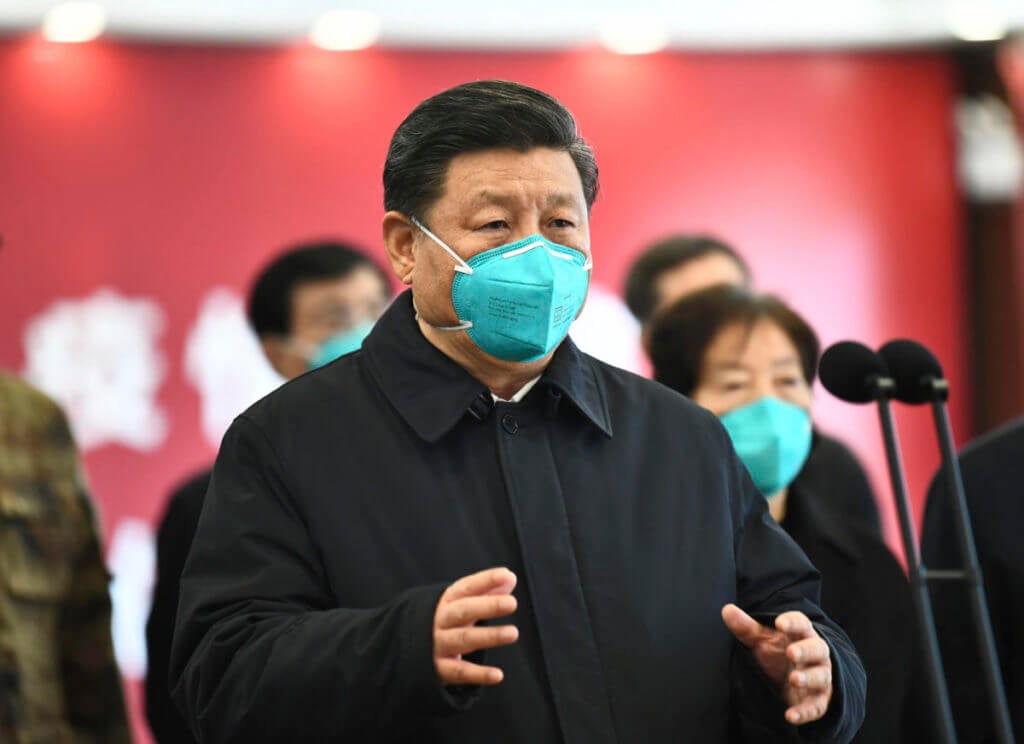America Is Heading into the Coronavirus Crisis Blind. These GDP Estimates Prove It

The United States is expected to see Depression-era economic numbers in the first half of 2020. | Image: Mark RALSTON / AFP
- GDP estimates show the U.S. economy will be harder hit than China’s by coronavirus.
- China’s stricter government controls and differing industries make it easier for the country to weather the coronavirus storm.
- The latest projections show U.S. politicians are heading into the crisis without a road map.
At the forefront of the coronavirus pandemic is how to minimize the loss of human life. But the economy has played a starring role in this tragedy as well. Many are looking to China, where life is starting to return to normal, for clues about the coronavirus’ economic impact.
America Will Suffer More than China
Estimates show that China’s economy will decline 10% in the first quarter. With coronavirus under greater control and the Chinese economy restarting, the nation is even expected to show a slight uptick in activity at the end of March.
By all accounts in the absence of another outbreak, China’s economy could see a V-shaped recovery.

America’s prospects look far worse. Estimates of how much U.S. GDP will fall in the second quarter range from 14% to 50% . Unemployment is seen rising to historic highs.
All of the predictions, no matter how optimistic, expect the U.S. to be hit harder than China.
Here’s a look at why China’s economy will fare better than America’s during the coronavirus pandemic.
Government Controls Helped China Slow Coronavirus Spread
In China, government control is the norm—so when coronavirus broke out police had the power to forcibly quarantine citizens and seal off entire towns. Those drastic measures are likely responsible for the nation’s relatively short-lived outbreak.
In the U.S., the government asked people to self-quarantine when they were ill. They advised social distancing but many balked in the face of those requests.
Even now, as entire states go into lockdown mode, the government and the police don’t have the same power to enforce isolation measures. That’s undoubtedly going to prolong the outbreak in the U.S. and cause greater economic damage.
U.S. Economy More Vulnerable to Coronavirus
Another glaring difference between the U.S. and China is the structure of their economies. China’s GDP is comprised mostly of manufacturing while the US relies on services:

There’s no doubt that manufacturing took a hit as factories were forced to shut down operations and close their doors. But what’s important is the fact that manufacturing activity can be recovered as long as the demand remains. That’s because companies that needed those goods still need them.
Services are different. The unbooked hotel rooms and empty restaurant chairs can’t be retroactively filled. Those losses are gone for good as time passes.
In the U.S., services makes up more than 77% of GDP whereas in China that figure is just 52%. That means the lost business that can’t be recouped due to social distancing will have a far greater impact on the U.S. than it will on China.

Plus, many believe that coronavirus and social distancing will have far-reaching consequences beyond the pandemic itself. Some expect the way Americans work and travel will change for good.
As people adjust to a new normal, some of the changes like working from home, avoiding crowds and teleconferencing could stick. That would be to the detriment of U.S. GDP moving forward.
Consumer Behavior
Another big difference between the U.S. and China is the behavior of consumers. The aviation industry is the perfect example of this disparity.
In America the average person takes more than 2 flights per year . It’s a $1.7 trillion industry that’s responsible for over 10 million jobs in the U.S.. Compare that to China’s aviation industry, which is worth $86.3 billion .
Life After Coronavirus
For now, no one is sure exactly how long coronavirus will continue to depress the U.S. economy. But even after the smoke clears the U.S. could find it harder than China to get back on track. Changes in consumer behavior, social norms and working conditions could drastically impact the U.S. economy for some time.

While it’s useful for Americans to look to China for blueprints on the coronavirus outbreak, it’s also important to keep in mind the stark differences between the two nations.
Coronavirus will behave differently in the U.S. because Americans behave differently. The U.S. economy won’t follow the same trajectory as China’s because it’s sustained by an entirely different set of industries. While going into a crisis blind is a last resort, the public needs to realize that’s exactly what American politicians, economists and analysts are doing.
Disclaimer: The opinions expressed in this article do not necessarily reflect the views of CCN.com.